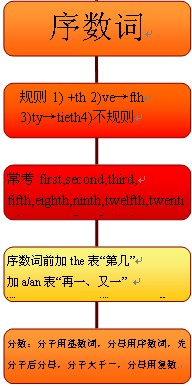Imagine living in a country torn by war. Or maybe you live in a place where there are few jobs and little chance to earn a living. Your family decides to move — not to another town, but to another country. You and your family have become immigrants. People are called immigrants when they move to a foreign country to make their homes.
People become immigrants for many reasons. The most common one is economic opportunities. Most immigrants are attracted to other countries by the promise of jobs, farmland, or business opportunities.
Other people become immigrants in order to get away from mistreatment or natural disasters. They are refugees. Some refugees move to avoid wars and political unrest. Others are seeking freedom to express their religious views. Still others are uprooted by disasters, such as terrible flooding or drought.
Some people have become immigrants against their will. Captured in Africa, shipped to foreign lands and forced to work as slaves, many early African immigrants to North and South America came in chains.
Except for Native Americans, all people came to the United States from someplace else. For nearly 500 years, immigrants have landed on America’s shores seeking a better life. Throughout American history, immigrants often worked low-paying, dangerous jobs that other people refused to do.
Immigrants from around the world helped shape American life. Many immigrants absorbed the customs and language common to most Americans. They also brought their own traditions, including music and foods. Over time, many of these traditions have become part of American life.
The first European immigrants to America hoped to colonize new lands. By the mid-1500s, Spaniards had ventured into Florida, California, and the American Southwest. French immigrants arrived in the early 1600s and built their first colony in Canada. The English also arrived in the early 1600s. They established 13 colonies along America’s AtlanticCoast.
In the 1700s, England became the major power in colonial North America. But many European immigrants came to live in the English colonies. They included people from Sweden, Holland, Germany, Scotland, and Ireland.
Immigrants still come to the United States seeking freedom and economic opportunities. Most new immigrants no longer come from Europe. They come mainly from Central and South America, the Caribbean, and Asia.
Today, the U.S. government limits the number of immigrants into the country each year. People who sneak illegally into the United States are called illegal immigrants, who, if caught, would be sent back to their home countries.
Key Points
| Detailed Information
|
小题1:
| Immigrants are those who move to a foreign country to make their homes.
|
Reasons
| Most people come for 小题2: opportunities, such as good jobs, farmlands, or business opportunities.
Some move to the US to 小题3: away from wars or disasters.
Some people immigrate to小题4: for religious freedom.
Some people have become immigrants小题5: , like many early African immigrants.
|
History
| French immigrants小题6: Canada in the early 1600s and built their first colony there.
The English also came to the early 1600s and小题7: thirteen colonies along America’s Atlantic Coast.
In the 1700s, European immigrants came to live in the English colonies, people from Sweden, Holland and etc. are小题8: .
|
Today
|
本题信息:英语完形填空难度一般 来源:未知
本试题 “Imagine living in a country torn by war. Or maybe you live in a place where there are few jobs and little chance to earn a living. Your family deci...” 主要考查您对 序数词 等考点的理解。关于这些考点您可以点击下面的选项卡查看详细档案。
序数词的概念:
表示顺序的数称为序数词。如:first, second, third, fourth。 序数词的构成与用法:
1、序数词的构成:
①一般来说,是由相应的基数词加词尾th构成。
例:four+th→fourth
six+th→sixth
seven+th→seventh
ten+th→tenth
②下面这些基数词在变为序数词时,有特殊的变化。
例:one→first
two→second
three→third
five→fifth
eight→eighth
nine→ninth
twelve→twelfth
③十位整数序数词的构成方法是将基数词的词y变成i,然后再加eth。
例:twenty→twentieth
thirty→thirtieth
forty→fortieth
ninety→ninetieth
④两位或两位以上的基数词变成序数词时,仅将个位数变成序数词。
例:twenty-one→twenty-first
thirty-five→thirty-fifth
a hundred and fifty-three→a hundred and fifty-third
2、序数词的用法:
①序数词在使用时,一般加上定冠词。
例:the first book
the second floor
the third day
the fourth week.
②序数词在多数情况下都用作定语,有的也可以作表语、主语和宾语。
例:The may1st is Labour Day. 五月一日是劳动节。
My room is on the second floor. 我的房间在二楼。
The first is larger than the secon.(主语)第一个比第二个大。
Read the book from the first.(宾语)从开头读这本书。
You'll be the sixth to write.(表语)你将是第六个写的。
③序数词的前面可以加上不定冠词,用来表示“再一”,“又一”的意思。
例:You may have a third try. 你可以第三次尝试。 序数词知识体系:

约数的表达方法:
用tens/dozens/scores/hundreds/thousands/millions of 表示“几十、几百、上千、成千上万”等。
如:The boy bought dozens of pencils.
Thousands of people died in the earthquake.
注意: (A):dozen, score, hundred, thousand, million等表示确切数量时,不用复数。
如:five dozen (of) eggs 五打鸡蛋
hree hundred people 三百个人
分数词的构成和用法:
1)分数词构成法:
分数词(FractionalNumerals)由基数词和序数词构成,基数词代表分子,序数词代表分母。除了分子为1的情况下,序数词都要用复数形式:
如:1/4:one-fourth
5/9:five-ninths
2/3:two-thirds
17/5:three and two-fifths
7/12:seven-twelfths
379/8:forty-seven and three-eighths
此外还有下面表示法:
如:1/2:a(one) half
1/4:a(one) quarter
3/4:three-quarters
9/4:two and a quarter
3/2:one and half
31/4:seven and three quarters
与“Imagine living in a country torn by war. Or maybe you liv...”考查相似的试题有:
- —So, tell me, how do you strike a balance between work and family as a working mother?—No matter how busy I am every ...
- 根据短文内容,从短文后的选项中选出能填入空白处的最佳选项。选项中有两项为多余选项。How to Read a BookBooks can be your...
- ---You are always full of ______. Can you tell me the secret?---Taking plenty of exercise every day.A.powerB.streng...
- One day I happened to find chat room on QQ,where people were chatting with English.I tried to chat with some of them....
- You have made a few pronunciation mistakes in your oral exam, but ______ , it is fairly good.A.above allB.generally...
- When I got up, I found parents were preparing breakfast for me.
- Yao Ming’s basketball career _______ after years of hard work and now he is popular in the world.A.took onB.took of...
- (4)完形填空An earthquake hit Kashmir on Oct. 8, 2005. it took some 75,000 lives, __21_ 130,000 and left nearly 3.5 ...
- 第二节:完成句子(共10小题;每小题1.5分,满分15分)阅读下列各小题,根据括号内的汉语提示,用句末括号内的英语单词完成句子,...
- 此题要求改正所给短文中的错误。对标有题号的每一行做出判断;如无错误,在该行右边横线上画一个钩(√);如有错误(每行只有...
|